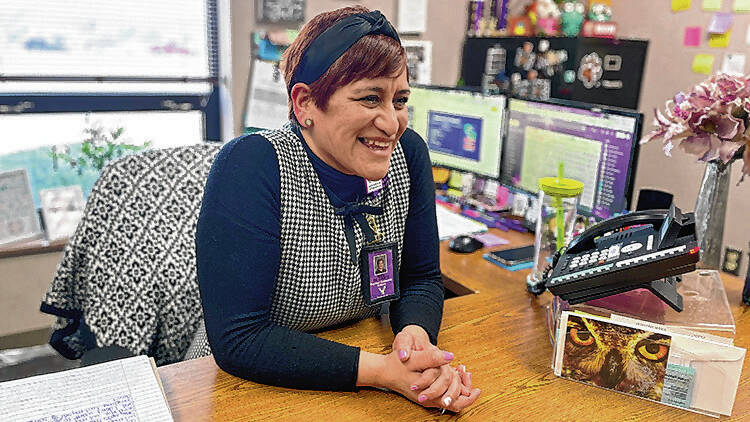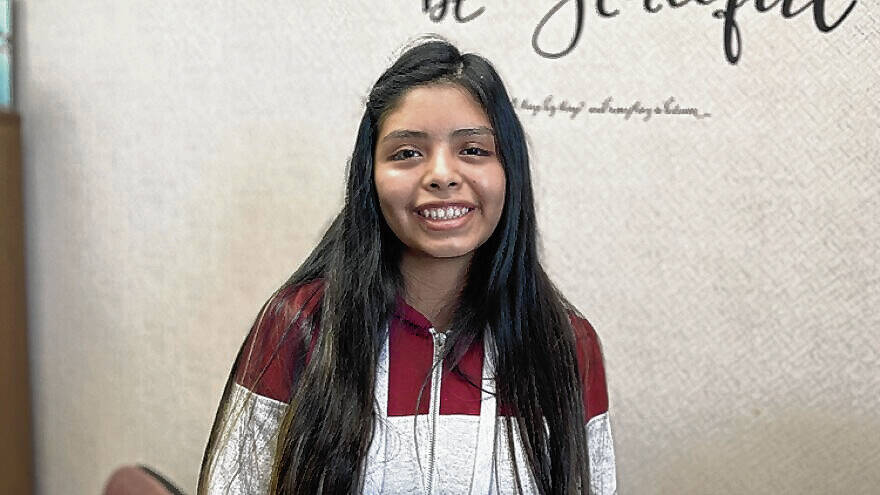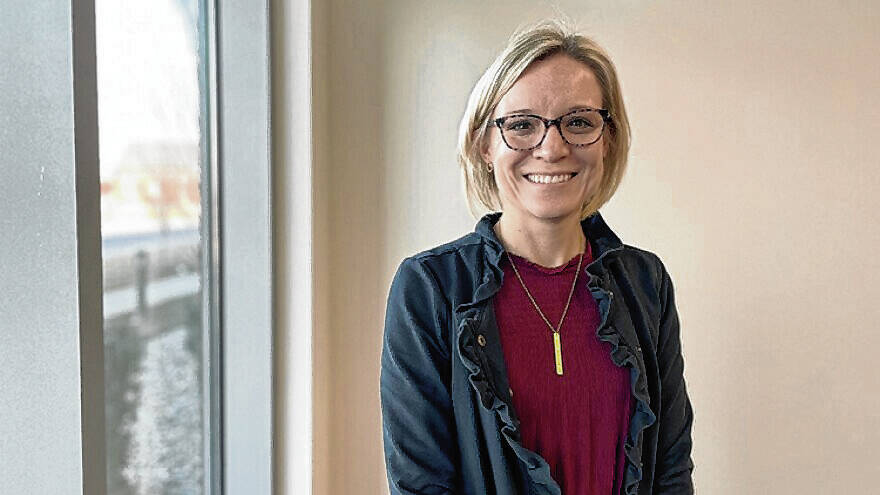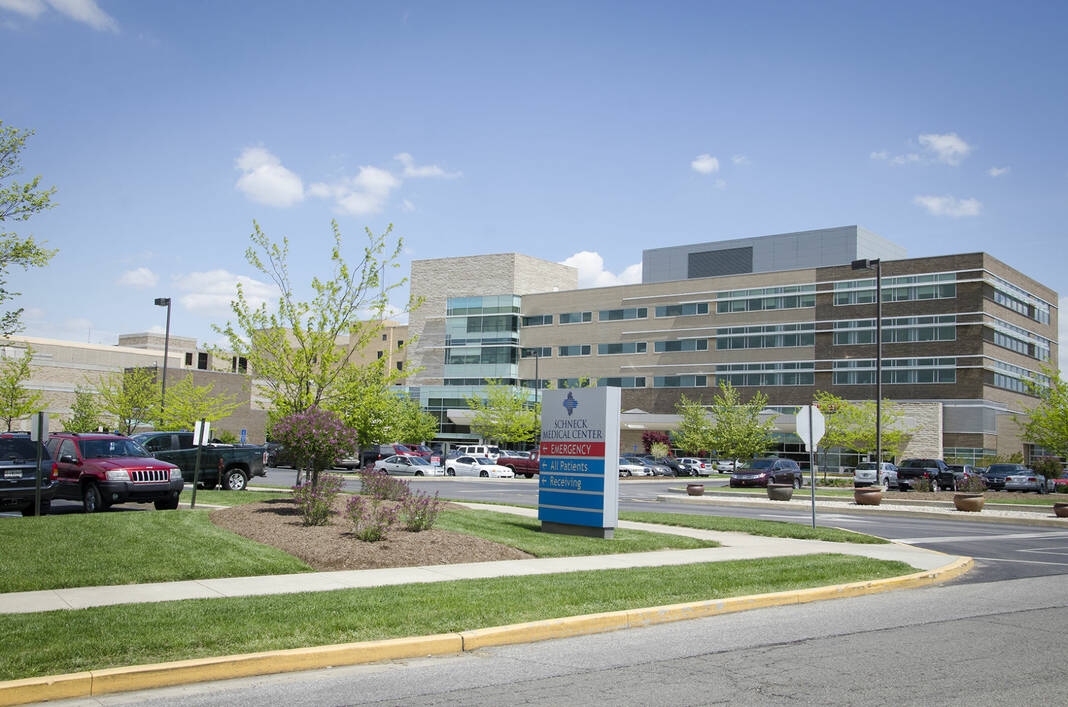By Carter Barrett | Side Effects Public Media
In the days leading up to her hospital’s COVID-19 vaccine clinic, hospital administrator Bethany Daugherty carefully monitored pre-registrations.
The numbers were low. Only about 30 people signed up to receive their shot.
“I thought, ‘Well, 30 is better than zero,’” said Daugherty, the health and wellness education specialist at Schneck Medical Center in Seymour.
Last summer’s vaccine clinics were targeted toward the growing number of immigrants from Central America in Seymour, which includes indigenous Mayan people from Guatemala.
Near the start of the pandemic, Daugherty spearheaded the hospital’s efforts to engage with the city’s growing Hispanic community. She connected with the local school, churches and nonprofits. Alongside community leaders, she helped launch a COVID-19 task force in 2020, initially aimed at distributing COVID information.
When the COVID-19 vaccine began rolling out the following year, the connections were already in place to get the word out. The task force worked to ensure interpreters would be available at the clinics. Two clinics were hosted at a local Catholic church that offers Spanish language services. Two more were hosted by a different local church that caters to the Chuj community.
Daugherty said she expressed her concerns about low registration numbers to other members on the task force, who reassured her, saying, “Bethany, don’t worry, don’t worry. This will happen. They will bring their friends. They will bring their family.”
“And they did,” she said.
Many rural U.S. towns, such as Seymour, have seen an influx of immigrants over the past decade. Now, communities and medical systems that lack experience supporting people who speak languages other than English are adjusting. And increasingly, the support needed goes beyond Spanish and includes little-spoken languages, like the indigenous Mayan language Chuj, spoken by some Seymour residents who immigrated from Guatemala.
So it required some creativity — and the help of a handful of trilingual high school students from Seymour — to make sure those residents would have access to information in their language at the vaccine clinic.
Providing information through trustworthy sources
In the early days of the pandemic, Daugherty said hospital administrators knew they needed to find a way to share critical information with Seymour’s Hispanic and Chuj communities, especially as internal data showed infections and hospitalizations disproportionately impacted Hispanic patients.
When the Hispanic Health Task Force initially launched, the group used WhatsApp, paper fliers and video messages to share information about COVID-19.
Reliable information provided by the hospital and health officials “carries more weight when it’s coming from a family member or a close friend that you trust,” Daugherty said.
Ana De Gante, the director of English as a second language at Seymour Community Schools, joined the task force early on. She said she appreciated that hospital leaders were open to feedback on their approach and were eager to understand the needs of Seymour’s immigrant population.
“I think it was very important that they were open to listening to the needs of the Hispanic community,” De Gante said.
Iveth Vasquez has lived in Seymour for more than 20 years and also serves on the Hispanic Health Task Force. In Honduras, she’s a licensed medical doctor, but she can’t practice in the U.S. Still, Vasquez is a trusted source for people in the community.
One of the biggest challenges with COVID outreach, she said, has been addressing misinformation about the vaccine that people are encountering on social media.
“YouTube is awful,” Vasquez said. “It’s good, but sometimes, (there’s) a lot of misinformation. I think when you educate the person in the right way, they are more open to accept the vaccination.”
New challenges
Seymour has a population of about 22,000 people. A railroad track splits downtown, and you can find a church every few blocks. On a downtown building, there’s a mural of singer John Mellencamp, who is from Seymour. In some ways, it feels like a classic American town whose prime has come and gone.
In other ways, Seymour represents how some parts of the rural Midwest are evolving — Hispanic grocery stores, restaurants and other services are peppered across town. U.S. Census data doesn’t offer specific country-level immigration data, but De Gante said the town has seen an influx of Chuj-speaking people coming from Guatemala in recent years.
An estimated 90,000 people speak the Mayan language in Guatemala. There is no data on how many people speak Chuj in the United States.
Over the last decade, Indiana’s metro counties experienced growth, while rural areas overall have shrunk. In the latest census, slightly more than half of Indiana’s 92 counties saw population declines between 2010 and 2020. But Jackson County, where Seymour is located, grew.
Hispanic individuals make up the bulk of the growth. Now, about 1 in 4 Seymour residents identify as Hispanic or Latino. That’s up from about 12% in 2010. In one census tract south of downtown, half of all residents identified as Hispanic or Latino.
This trend is playing out across the United States. A 2020 study found Hispanic people accounted for about 9% of non-metro growth in 2017, up from 5% in 2000.
In Seymour, almost 14% speak a language other than English at home, and 9% are foreign-born.
A growing immigrant population can bring new challenges, especially during a pandemic when barriers to health care include language and mistrust in government and medical institutions.
Plugging gaps
When the task force began to plan last summer’s vaccine clinics, the hospital was prepared to provide five to eight interpreters at each event.
But Daugherty said they knew Chuj translation services were going to be a challenge. At the time, there was just one Chuj-speaking person within Jackson County’s medical community.
“We’re like, ‘One translator is probably not going to be able to do all of that unless we want (that person) to be there all day long,’” Daugherty said.
As a solution, De Gante turned to her trilingual students who speak English, Spanish and Chuj and asked them to volunteer as translators at the vaccine clinic. The students who agreed to help received some training in the translation of medical terminology.
“They feel so good to be able to help,” De Gante said. “You know, I think they feel proud. I think they feel like they can be really great resources for the community.”
One of these students, Seymour High School senior Miranda Keith Mateo Sebastian, speaks both Chuj and Spanish. Her mom and three siblings moved to Seymour from Guatemala.
“It was a great opportunity because I was motivated to continue helping people and improve my English,” Sebastian said.
But some critics say the children of immigrants shouldn’t be asked to translate health information for their families or communities, arguing the practice puts an undue burden on these children and invades the privacy of adults.
“There’s a lot of conversations around children of immigrants … who have this really interesting dynamic where they suddenly become the interpreter, right? That can be challenging, that can be impactful for families,” said Yamilé Molina, a health disparities researcher at the University of Illinois at Chicago.
But it’s a nuanced issue, Molina said. And perfect shouldn’t be the enemy of the good.
Best practices for outreach to minority communities include efforts like the ones being made in Seymour, Molina said. And if high school students are willing to participate and have people checking in with them, it could be mutually beneficial for them to be involved in COVID vaccine outreach.
“Students are not monolithic,” they said. “So I think it’s a matter of not assuming there’s one path towards engaging students and young people.”
While planning the vaccine clinics, Daugherty said the task force considered the pros and cons of involving high school students as interpreters. Potential risks included the chance of exposure to the coronavirus. On the plus side, the students are part of Seymour’s Hispanic and Chuj-speaking communities and are familiar faces who would help people feel comfortable.
Metrics for success
The hospital says it vaccinated an estimated 400 people at the vaccine clinics organized by the Hispanic Health Task Force. The clinic did not track what proportion of those people were Chuj-speaking residents, but Daugherty said the task force felt it was a great turnout.
Daugherty is quick to point out many of the task force’s successes aren’t easy to quantify.
“I think we have some metrics that you really can’t measure with numbers,” she said. “And that comes down to trust.”
The task force is now evaluating the need for a COVID-19 booster clinic, she said.
The perception of the hospital has become more positive thanks to the task force’s efforts, Vasquez said. More newly arrived residents now know the hospital is a safe space for immigrants. And now, she hopes other routine procedures, like mammograms or annual checkups, won’t seem as scary and unfamiliar.
“Seymour is our community. It is our home,” Vasquez said. “So that’s a common point between us, even if we are from different countries.”
On the Web
To see the Spanish language version of this article, visit tinyurl.com/3hvvvj3y.




